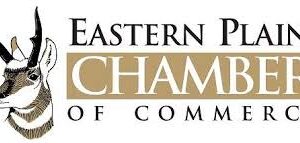It’s tax refund season again. This year, if you’re going to get a check from Uncle Sam, why not put it to work to help you meet your financial goals?Last year, the average tax refund was more than $2,700, according to the IRS. The size of your refund or whether you will get one at all depends on your individual circumstances. But if you are going to get a refund, plan ahead for what you’ll do with it. Here are a few possibilities:
- down some debts. In these difficult economic times, you may be carrying a higher debt load than usual. If so, you may want to use some of your refund to pay down some of these debts. The lower your debt payments, the better your cash flow and the more money you’ll have to invest for the future.
- Build an emergency fund. If you don’t already have an emergency fund containing six to 12 months’ worth of living expenses, you could use your tax refund to start one. Without such a fund, you may find yourself constantly dipping into your long-term investments to pay for unexpected costs, such as a new furnace or an expensive car repair. Keep your emergency fund in a liquid account – one that you don’t draw on for your day-to-day expenses.
- Help fund your IRA. In 2010, you can put in up to $5,000 in your IRA. Consequently, if you received a $2,700 refund, you’d have more than half of what you need to fully fund your IRA for the year. (If you’re 50 or older, however, you can contribute up to $6,000 per year.)
- If you put $2,700 in your IRA and you earned, on average, 7 percent a year for 30 years, you’d end up with about $20,000, even if you never invested another dime.
- If you put $2,700 every year in that same IRA, again earning an average 7 percent annual return, you’d end up with more than $270,000 after 30 years. (These examples are hypothetical illustrations and do not represent any currently available investments.)You would eventually have to pay taxes on your earnings, typically when you make withdrawals at retirement. And if you qualified for a Roth IRA, you’d never have to pay taxes on your earnings as long as you had your account for at least five years and didn’t start taking withdrawals until you were at least 59-1/2.
- Contribute to a Section 529 plan. If you have children or grandchildren, you may want to establish Section 529 plans to help them pay for college. You can contribute virtually any amount, and the earnings grow tax-free, provided the money is used for higher education expenses. (Withdrawals used for expenses other than qualified education expenses may be subject to federal, state and penalty taxes. Contributions are tax-deductible in certain states for residents who participate in their own state’s plan. Please note that a 529 college savings plan could impact a beneficiary’s ability to qualify for financial aid.)






